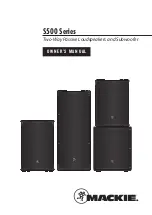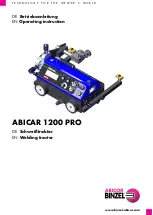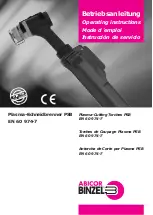
K1_RM_EN_2-0
w w w . l - a c o u s t i c s . c o m
35
35
35
35
6.3
Flying a vertical array by using the CATERPILLAR method
6.3.1
Modeling and safety
Any system must be modeled before installation so as to ensure acoustical and mechanical conformity. This can be
done using
L-ACOUSTICS
®
SOUNDVISION Software
[3.4] which will assist the user to:
•
Determine the number of required K1 and/or K1-SB enclosures.
•
Calculate the K1-BUMP site angle and inter-enclosure angles.
•
Check the mechanical conformity of the system.
The K1-BUMP can nominally fly a maximum of 24 K1 and/or K1-SB enclosures along with 4 LA-RAK
touring racks and all loudspeaker cables (refer to the
K1, K1-SB, and LA-RAK User manuals
[3.4]).
However, this maximum number can decrease in line with array curvature.
ALWAYS refer to the mechanical data and warning indications provided in SOUNDVISION software
(
Mechanical Data
section) to verify the mechanical conformity of the system before installation.
6.3.2
Array mounting
The CATERPILLAR method consists in building the array by adding the enclosures one by one. Each enclosure ships
onto an
L-ACOUSTICS
®
K1-PLA
dolly board.
The fully integrated rigging system on K1 and K1-SB allows assembling the enclosures and K1-BUMP with no need for
any external fastening accessory. The following procedure describes how to fly a vertical array of eight K1 by using the
CATERPILLAR method.
All along the procedure:
•
Strictly follow the sequence of the successive steps.
•
Ensure that each BLP is fully inserted.
•
Have 3 people working (one operating the hoist controller and one on each side of the array)
while raising or lowering the array so as to prevent it from swinging.
•
For clarity purposes the loudspeaker cabling procedure will not be described.
•
The loudspeaker cables will not be represented on the figures.
•
Use a strain relief to avoid mechanical stress at the connector locations due to cable weight.
1.
Line up the K1-BUMP and all enclosures at the rigging location.
Figure 30: Lining up K1-BUMP and enclosures
CAUTION
WARNING
WARNING
#1
#2
#3…
Summary of Contents for K1
Page 2: ...w w w l a c o u s t i c s c o m ...
Page 68: ...w w w l a c o u s t i c s c o m ...
Page 69: ...w w w l a c o u s t i c s c o m ...
Page 70: ...w w w l a c o u s t i c s c o m ...
















































